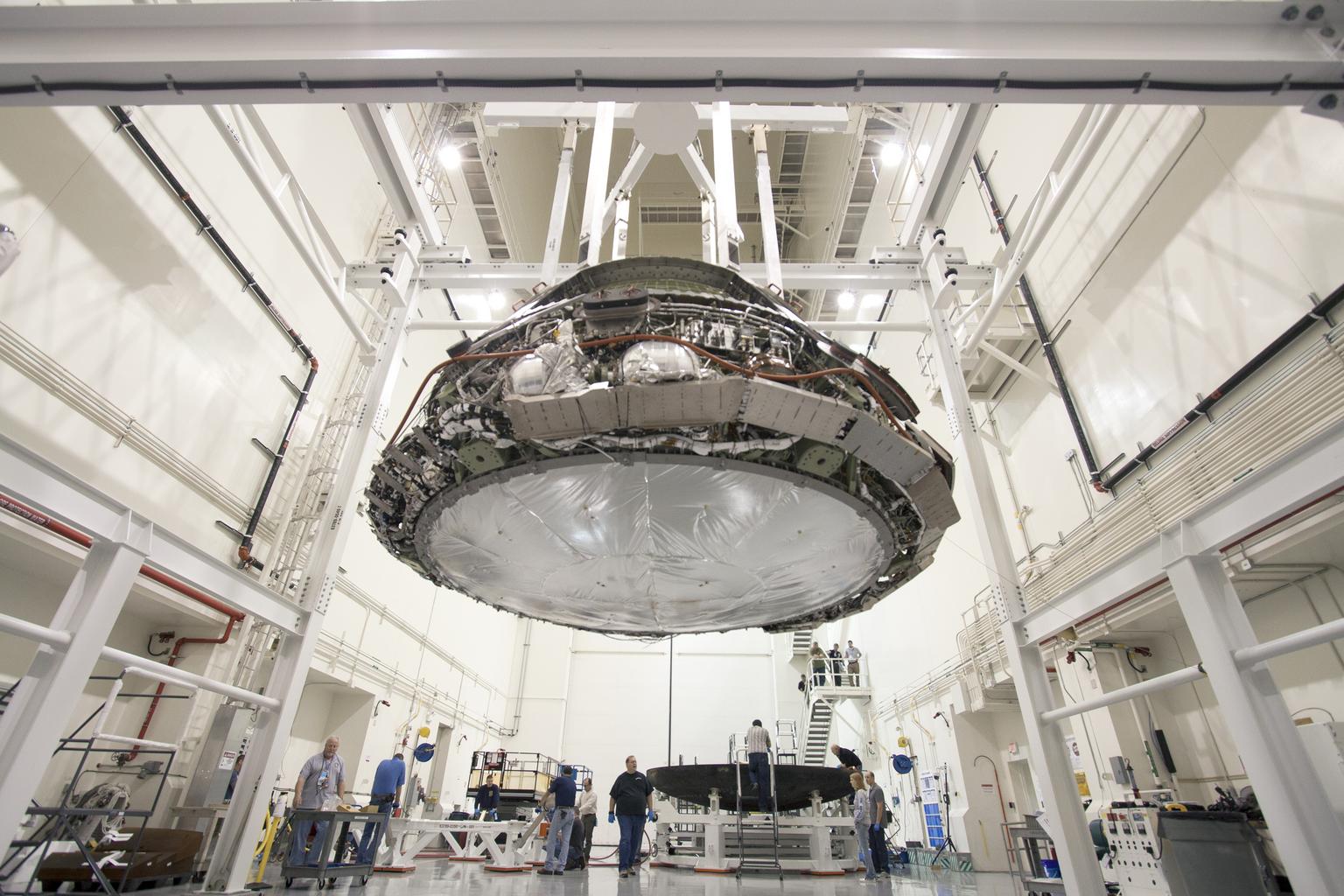By: Sara M. Langston, Assistant Professor of Spaceflight Operations, Embry-Riddle Aeronautical University

On May 30, 2020, millions of Americans watched the inaugural SpaceX Crew Dragon launch NASA astronauts to the International Space Station. This mission marked two significant events: First, the return of launch to orbit capability for human spaceflight from the United States. Secondly, it successfully demonstrated private sector capability to build and operate a launch vehicle for human spaceflight.
While SpaceX may be the first private space company to accomplish this, it is not alone. Boeing's Starliner and Lockheed's Orion capsule are also being developed for NASA's Commercial Crew Program, and training has begun for safety operations on the spacecraft.
As an aerospace lawyer working and teaching on human spaceflight law and policy for over a decade, I have a professional and personal appreciation for current spaceflight technologies and astronaut developments.
For many, the Crew Dragon launch marked the start to a new era of commercial access to space and private human spaceflight. However, given logistical and destination requirements for Earth orbit or beyond, the onset of larger-scale private human spaceflight is more likely to emerge within the suborbital space market.
Commercial suborbital flights coming next
A suborbital flight, in contrast to SpaceX's recent orbital flight, is a brief spaceflight that fails to complete one full orbit of the Earth. That is, you launch your space vehicle to the edge of space and come right back down. Virgin Galactic has been inching closer to commercial suborbital launch operator status with successful crewed test flights in February 2019. In fact, Virgin Galactic's SpaceShipTwo, an air-launched suborbital rocket, and Blue Origin's New Shepard, a rocket-launched space capsule, are projected to commence suborbital flights catering to both space tourists and scientific research this year. Each suborbital flight presents a unique spaceflight experience, trajectory and set of regulatory requirements.
While industry continues to test and refine tech and operations, the Federal Aviation Administration - which regulates launch, reentry and spaceports for U.S. commercial spaceflight - is also morphing to address the needs of the emerging private space industry.
What you need to know before you fly to space
Spaceflight is regarded as an inherently dangerous activity. While some hazards of spaceflight and the space environment - like G-forces, radiation, vibration and microgravity - are well documented, many risks remain unknown. The scope of physiological risks spans pre-flight, in-flight, and post-flight operations and activities.
FAA regulations also focus on the safety and protection of the public on the ground, not the civilian passengers who are called spaceflight participants. This includes anyone who is not crew or a government astronaut on a spacecraft.
As a result, regulations stipulate minimum requirements with regard to medical fitness and training for space tourists, as well as informed consent, and waivers of liability to protect the launch operator.
So prospective space participants are taking a big risk.
Medical criteria
No standardized medical criteria exists for screening or selecting spaceflight participants. Unlike flight crew which require a Class II airman's medical certificate, there is no similar requirement for fitness to fly for space tourists. Where the law is silent or lacking, the FAA's Recommended Practices for Human Space Flight Occupant Safety can provide general guidance.
Here the FAA recommends a spaceflight participant receive a medical consultation within 12 months of flight from a physician trained or familiar with aerospace medicine. Since this is a not a legal requirement, ultimately it will be up to the launch operator to determine fitness-to-fly and "no-go" criteria for preexisting conditions.
Virgin Galactic, for example, has few restrictions: no upper age limit, and weight limit only as it relates to practical space vehicle requirements.
When it comes to the risks from radiation, the FAA tries to reduce the exposure for crew members. But it considers the radiation risks of a space tourist taking a single suborbital joy ride as insignificant.
Training
Similar to how airlines provide safety information before a flight, the launch operators are required to instruct space tourists on how to respond to emergency situations including smoke, fire, loss of cabin pressure and emergency exit.
This is a minimal requirement, and each launch operator determines its training protocol. Virgin Galactic, for instance, offers a three-day training with a focus on participant's gear, communications and function, and spacecraft cabin.
Flight crew, in contrast, must be trained and qualified to perform their critical functions, and withstand the pressures of spaceflight. Orbital or long-duration spaceflights, however, will likely require more stringent commercial industry training protocols than for suborbital flights.
Informed consent
The FAA set the age requirement for civilian participants at 18 years.
This is necessary to ensure the participant can provide informed consent. In addition, the regulations dictate that the launch operator inform crews and participants that the U.S. government does not certify the spaceflight and space vehicle as safe for humans.
The launch operator must also inform the participants in writing of the risks of launch and reentry, the safety record of the vehicle, and that both known and unknown space hazards and risks could result in serious injury, either partial or total physical or mental disability.
Waivers of liability
The spaceflight participant is also required to sign a reciprocal waiver of liability with the commercial launch operator and an indemnification agreement with the Federal Government.
However, participants don't sign a waiver with other participants. Meaning, if an accident occurs, spaceflight participants can sue each other but generally not the launch operator or the government.
To protect oneself, it would be advisable to take out insurance. A few companies, including AXA XL and Allianz, are beginning to offer third-party liability insurance for civilians to engage in spaceflight.
The space industry expects that many people may want to go to space in the near future, and private spaceflight is being marketed as the next experience in luxury escapism and scientific research.
But the hazardous nature of spaceflight also requires critical understanding of the risks and uncertainties in human spaceflight. The industry is still in its infancy, and the best practices and regulations for human spaceflight are still evolving.
Fra Via Satellite:
Space Tourism Needs Passenger Safety Regulations to Truly Take Off
By Swati Ravi | June 11, 2020

Illustration: Via Satellite
Growing up, my favorite part of visiting Disneyland was climbing aboard the rocket-shaped roller coaster cart of Space Mountain and dreaming of one day visiting space. As the recent Crew Dragon Demo-2 launch marked the first crewed spaceflight for SpaceX, the future of commercial space tourism has never looked better. SpaceX’s launch kicks off a new era of spaceflight in which aerospace companies like Virgin Galactic and Blue Origin hope to erase the traditional limits of astronautics and take paying customers to space. But despite this dawn of a new age of commercial space tourism, regulations surrounding passenger safety are largely nonexistent, with little standardized health and safety restrictions for private space companies.
Congressional legislation has prevented formal safety certification of spacecrafts until at least 2023, even as Virgin Galactic completes test flights on its path to commercial service. In fact, amusement park rides like Space Mountain currently face stricter safety regulations than the commercial space industry, raising the question of how an industry can operate without real health and safety standards.
Congress first acknowledged the question of spaceflight safety in 2004, when it passed the Commercial Space Launch Amendments Act (CSLAA). CSLAA designated the Federal Aviation Administration (FAA) to regulate space tourism, but promptly barred the FAA from imposing any spaceflight participant safety requirements for eight years to provide the commercial space industry a regulation-free “learning period.” During this learning period, the FAA has been permitted to take action against falling debris from commercial spacecraft tests, but when it comes to passenger safety, the FAA has only been allowed to restrict design features and operating practices that result in a fatality or serious injury to passengers. As the timeline for commercial space tourism was delayed, the learning period was extended with the FAA Modernization and Reform Act of 2012 and the Commercial Space Launch Competitiveness Act of 2015, turning the eight-year learning period into a 19-year regulatory vacuum. Until October 1, 2023, the FAA has virtually no authority to regulate spaceflight passenger safety or certify the safety of commercial spacecrafts. Instead, the agency is required to wait until a potential disaster before having authority to enforce meaningful spaceflight passenger safety standards.
Currently, the FAA only requires that spaceflight operators educate passengers about the risks of space flight through a confusing and questionably effective “informed consent” procedure. This generally requires providing passengers safety records of launch and reentry vehicles, clarifying that no commercial space vehicles can earn government safety certification at present time, and informing passengers of emergency protocol loss of cabin pressure or cabin fire. Absent from the FAA guidelines are specific requirements about the kind of language necessary for operators to communicate spaceflight risks, leaving passengers less than fully informed about the true risks of their flight.
Moreover, informed consent does not explicitly require informing passengers of potential health risks or medical conditions associated with space travel despite a growing understanding of the physiological consequences of space flight relating to microgravity and radiation exposure. The FAA’s own guidelines suggest that “space flight exposes individuals to an environment that is far more hazardous than what is experienced by passengers who fly onboard current airline transports.” Despite long standing medical requirements for NASA astronauts on everything from vision to blood pressure, the FAA’s informed consent procedure focuses largely on spacecraft safety and leaves medical questionnaires, physical exams, and lab tests as recommended but not required commercial spaceflight safety protocol. These gaping holes in the informed consent process underscore the necessity for making commercial spaceflight passenger safety a policy priority.
The FAA’s limited capability to impose safety restrictions until after serious harm puts the commercial space industry in a dangerous position to respond to deadly accidents. In the wake of the two Boeing Max 737 crashes, the practice of Boeing self-certification was subject to heavy scrutiny and many found their trust in airline safety broken. One commercial spaceflight accident could prematurely dissuade would-be passengers and invite hastily imposed regulations that could suffocate the industry with over-corrective measures.
The aviation industry’s history further supports the notion that increased safety standards pose little risk to innovation. Within a decade after Congress passed the Air Commerce Act of 1926, which provided “airworthiness certificates” to validate airplane design safety, the first modern commercial airline operations were successfully underway. Instead of hindering commercial space innovation, safety regulations could actually increase public confidence in the industry.
As the 2023 learning period deadline approaches, many will undoubtedly fight to extend the freeze on FAA spaceflight passenger safety regulations. But with the great strides in commercial spaceflight made in the past two decades, addressing passenger safety can no longer be delayed. As with the airline industry, demanding more robust health and safety standards from the FAA now will be critical to allowing space tourism to truly take off in the decade ahead.

Ingen kommentarer:
Legg inn en kommentar
Merk: Bare medlemmer av denne bloggen kan legge inn en kommentar.